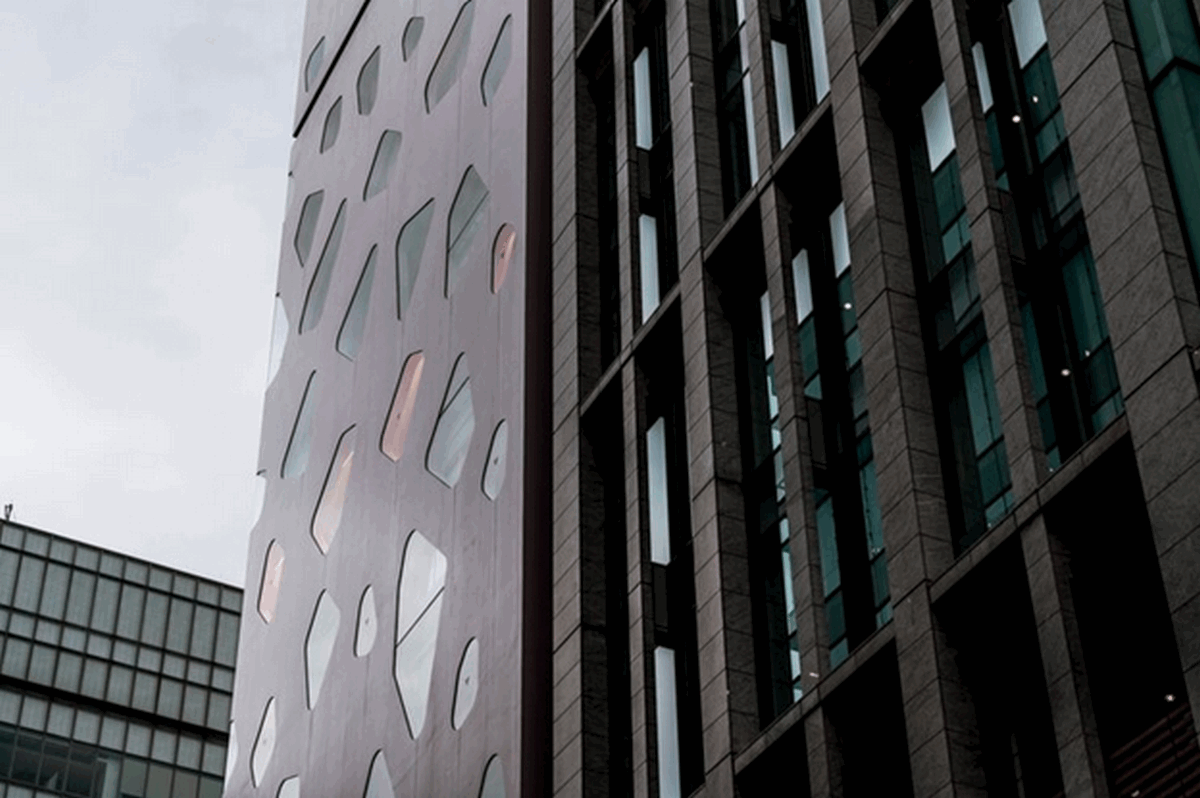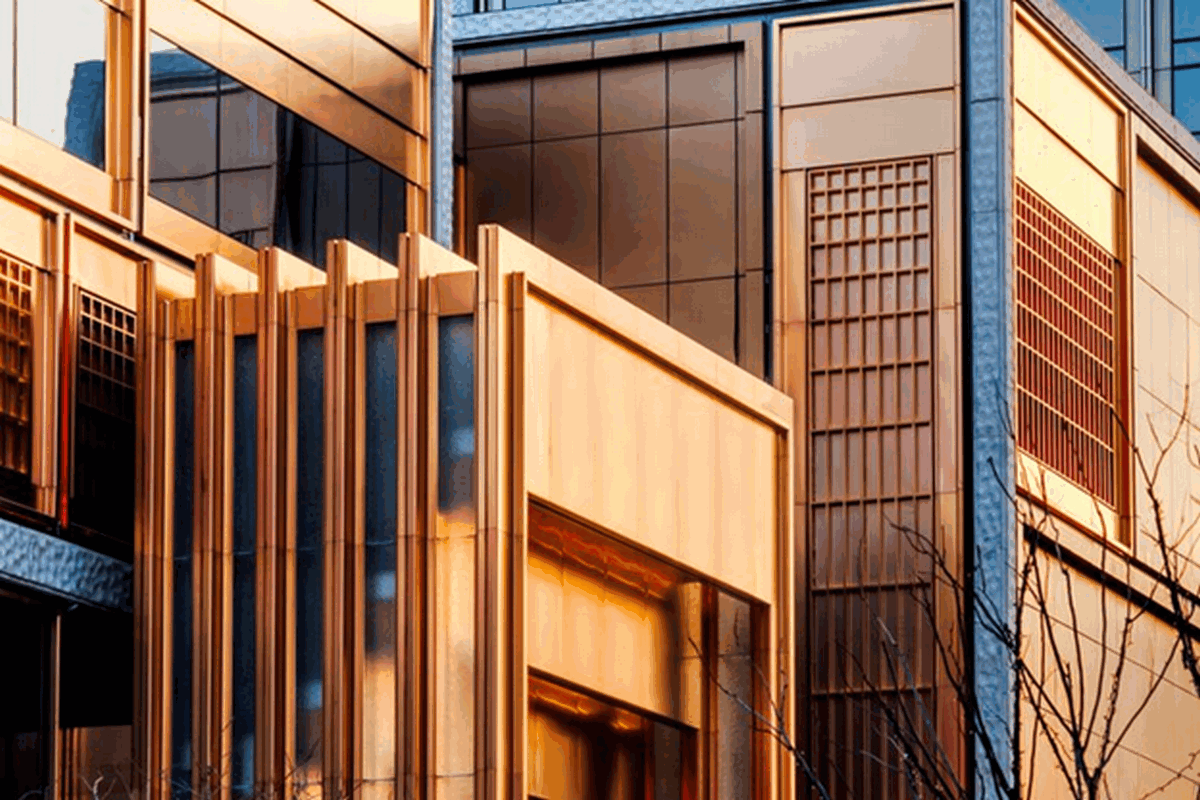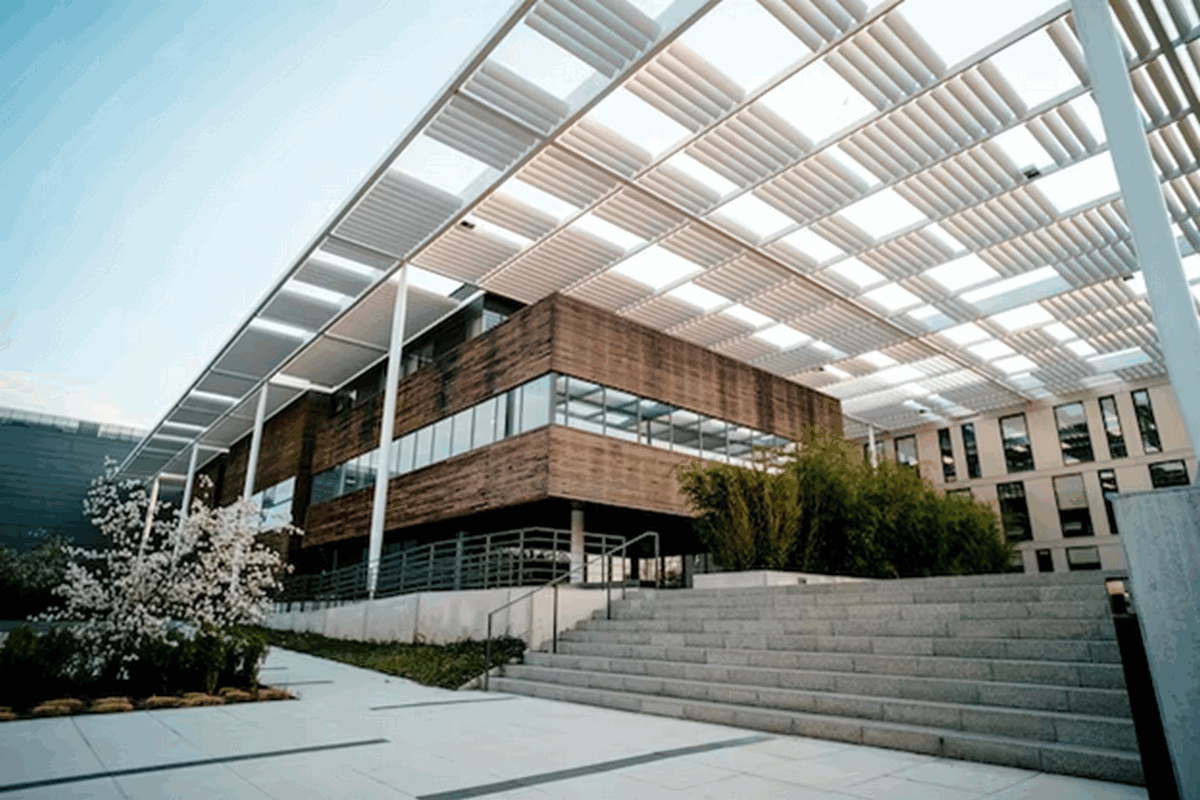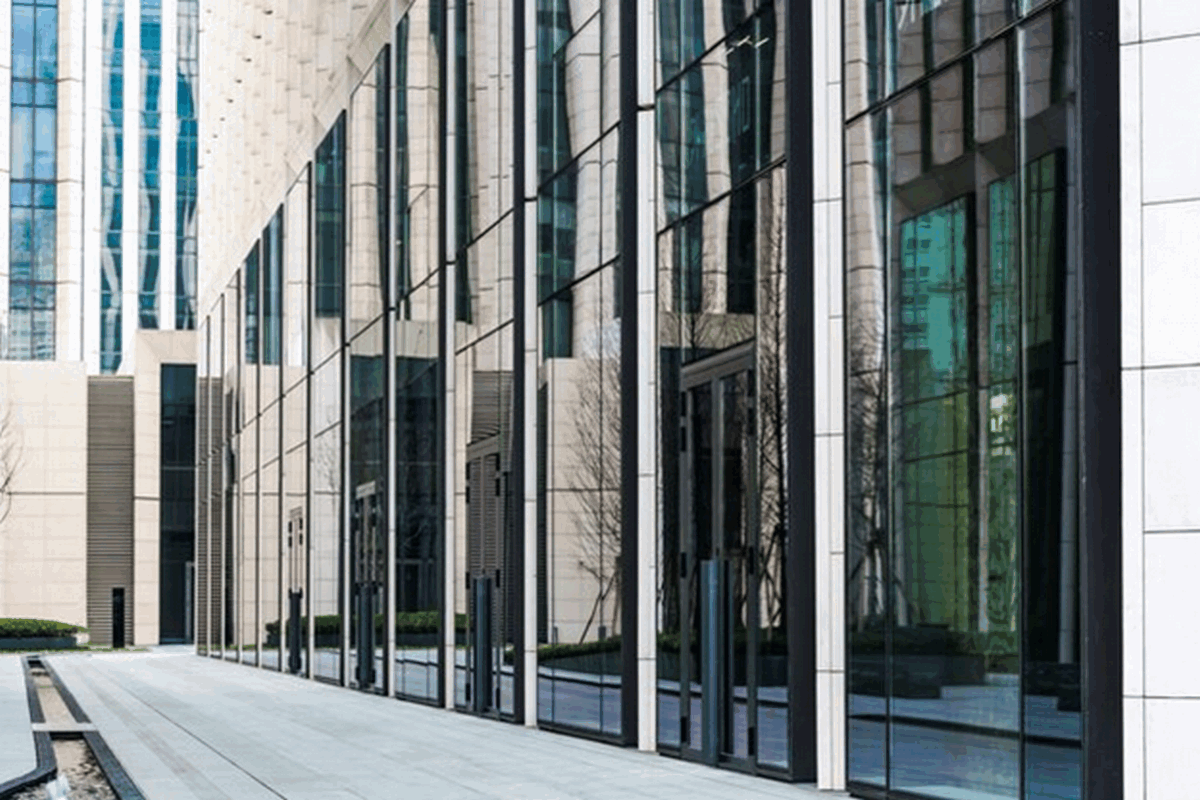Sustainability and resilience, The evolution of material choices in commercial architecture, Sustainable Green projects
The Evolution of Material Choices in Commercial Architecture
14 November 2023
Sustainability and Resilience:
Modern facilities face an unprecedented challenge in balancing sustainability with resilience in the face of climate change and increasing consumer standards. Commercial architecture, as a key driver of urban development, is at the forefront of this transformative journey, demanding a critical reevaluation of material choices. Keep reading as we explore some of the most trending materials in commercial architecture that help balance sustainability and resilience.
ACM (Aluminum Composite Material) Panels: Redefining Facades with Energy Efficiency
ACM panels have emerged as a sustainable and resilient solution for commercial facades. Comprising a lightweight non-aluminum core sandwiched between two aluminum sheets, these panels offer impressive strength, weather resistance, and flexibility in design. The benefits of acm panels systems include:
- Enhanced Energy Efficiency: Reflective coatings can significantly reduce urban heat island effects and associated energy use.
- Design Versatility: Customizable finishes and colors allow unique aesthetic expressions. ACM panels are also flexible to be bent and shaped to help realize any type of design, making them suitable for a wide array of applications.
- Durability: Resistant to fading, corrosion, extreme temperatures, and seismic activity.
All in all, ACM panels play a critical role in helping modern structures achieve top-notch sustainability without sacrificing aesthetics in the process.
Wood Acoustic Panels: Creating Harmonious and Sustainable Interiors
Now more than ever, acoustics play a significant role in day-to-day functions. With our highly connected and increasingly remote lifestyles, commercial structures must have an elite acoustic atmosphere to ensure superior sound quality for remote professionals, online influencers, and any other patrons who need to record.
While there are various products used in modern sound mitigation techniques, wood acoustic panels present a sustainable solution for controlling sound in commercial spaces. These panels, made from reclaimed or sustainably sourced wood, combine exceptional acoustic performance with aesthetic appeal. Among their benefits are:
- Superior Sound Absorption: Efficiently absorb mid-to-high frequencies, improving speech intelligibility and reducing background noise.
- Sustainable Manufacturing: Utilize renewable resources, contribute to indoor air quality, and minimize carbon footprint.
- Aesthetic Flexibility: Versatile textures and patterns complement various design styles.
Understand that most acoustic panels can effectively control sound without completely altering your interior design scheme. Most modern panels can reduce echo, sound transmission, and reverberation with around 15-25% wall coverage, making wood acoustic panels a great choice for accent walls or as complementary additions in strategically placed locations.
Roof Deck Tiles: Enhancing Durability and Water Management
In commercial architecture, durable and water-efficient roofing systems are paramount–even more so with the increased popularity of rooftop decks. Rooftop decks are popular in commercial high rises thanks to their ability to offer functional exterior space and a change of scenery for urban residents.
When designing a rooftop deck, it is important to have the right roof deck tiles that can handle increased foot traffic while still promoting optimal rooftop drainage. Roof deck tiles, often composed of materials like porcelain, concrete, or polymer composites, offer innovative approaches to roof design. Some of the other benefits of the best roof deck tiles include:
- High Durability: Resistance to impact, hail, and extreme temperatures ensures long-term performance.
- Effective Water Management: Interlocking tiles create seamless barriers, minimizing leaks and reducing maintenance requirements.
- Environmentally Friendly: Reflective properties lower cooling energy demands and reduce urban heat island effects.
When constructing a rooftop deck, it is essential to ensure that the substrate of the roof is in good enough condition to handle the additional load. In most cases, it is a good idea to include structural b-decking to the base of the roof to provide shear support and additional load bearing capacity.
Demountable Glass Partitions: Adaptable Spaces for Modern Workplaces
With the rise of hybrid work environments, the demand for customizable office space has never been higher. However, without glass partitions it can be a bit of a challenge to create spaces that are open and inviting while also ensuring the privacy that is often necessary in a professional work environment.
Once trending solution in this regard is the use of demountable glass partitions. These systems offer a sustainable alternative to traditional drywall construction, promoting adaptability without compromising on soundproofing or aesthetic appeal. Among their benefits are:
- Space Flexibility: Easily reconfigurable to accommodate changing business needs.
- Acoustic Performance: Advanced glazing technologies provide effective sound insulation.
- Natural Light Optimization: Transparent designs maximize daylight penetration, enhancing occupant well-being. Increased natural light can also significantly reduce utility costs in commercial structures.
As you can see, demountable wall partitions help blend the lines of the traditional office space with more modern sensibilities, making them a premier choice in commercial facilities that want to maximize the sustainability benefits of open interiors.
The Future Is Here With Sustainable and Resilient Architectural Materials
The evolution of material choices in commercial architecture presents a powerful opportunity to foster sustainability and resilience in the built environment. ACM panels, wood acoustic panels, roof deck tiles, and demountable glass partitions demonstrate innovative approaches that align design excellence with environmental responsibility. By embracing these materials, architects and developers can create commercial spaces that are environmentally responsible, adaptable, and responsive to the demands of the modern world. For more on the latest trends in architecture, explore the resources at e-architect for the leading insights in the industry!
Comments on this guide to Sustainability and Resilience: The Evolution of Material Choices in Commercial Architecture article are welcome.
Eco Architecture
Contemporary Green Architecture Design
Sustainable Timber Architecture
Sustainable Timber Architecture News
Sustainable housing – Donside Urban Village
Buildings / photos for the Sustainability and Resilience: The Evolution of Material Choices in Commercial Architecture page welcome








